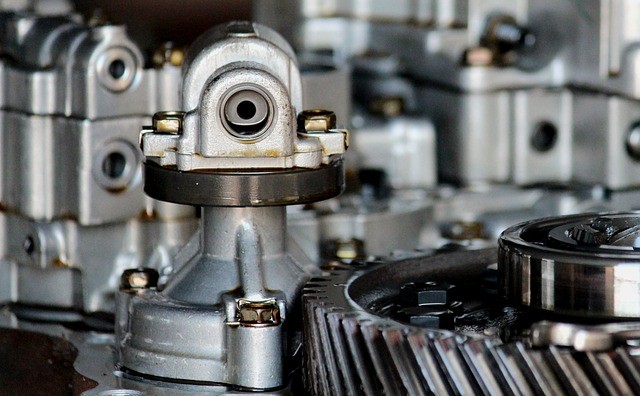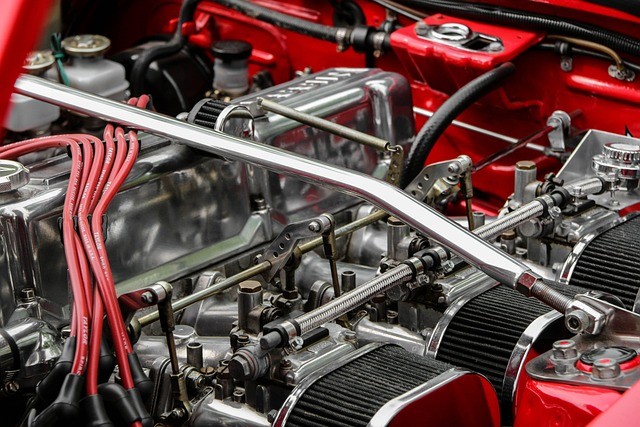Have you ever encountered the P0430 code while driving your vehicle? If you have, then you know that it’s not something to be taken lightly. This code is one of the many diagnostic trouble codes that can indicate a problem with your vehicle’s catalytic converter.
The catalytic converter is an essential component of your car’s exhaust system that helps reduce harmful emissions from the engine. It contains precious metals like platinum, palladium, and rhodium that work together to convert toxic gases into less harmful ones before they are released into the atmosphere.
When the P0430 code appears, it means that there is a malfunction in the catalytic converter system. This can cause a decrease in your car’s performance and even lead to its failure during emissions tests.
Understanding the importance of this code can help vehicle owners take the necessary actions to maintain their vehicles and protect the environment. By addressing any issues related to this code promptly, you can save yourself from costly repairs down the line and do your part in reducing air pollution.
So, if you encounter this code while driving your car or during an inspection, make sure to take it seriously and seek professional help as soon as possible. Don’t let this small issue turn into a bigger problem for both you and the environment.
Common Symptoms of P0430 Code: Identifying the Issue
Symptoms of P0430 Code
The P0430 code is a diagnostic trouble code that indicates an issue with the catalytic converter. This code is often triggered when there is a problem with the efficiency of the catalytic converter or if it has failed completely. The symptoms of this code can include reduced engine performance, decreased fuel efficiency, and an illuminated check engine light.
When your vehicle’s check engine light comes on, it could be any number of issues, but if you’re experiencing one or more of these symptoms along with the illuminated check engine light, there’s a good chance that it’s related to the catalytic converter.
Identifying the Issue
Identifying the issue requires a diagnostic scan tool to read the trouble code and pinpoint the problem area. The P0430 code specifically relates to Bank 2 (the side of the engine that does not contain cylinder #1) and indicates that there is an issue with its catalytic converter.
If you have access to an OBD-II scanner, you can use it to read and clear codes yourself. However, if you’re not familiar with how to use one or don’t have access to one, taking your vehicle to a mechanic or auto parts store for diagnosis may be necessary.
It’s important not to ignore this error code as it can lead to further damage to your emissions system and potentially expensive repairs in the future. If left unresolved for too long, other components in your exhaust system may also become damaged.
Causes of P0430 Code
There are several potential causes for why your vehicle might trigger a P0430 fault code:
-
Failed Catalytic Converter: As mentioned earlier, this is typically what triggers this particular error code.
-
Oxygen (O2) Sensor Failure: A faulty oxygen sensor can cause inaccurate readings which may cause issues with your catalytic converter.
-
Exhaust Leak: A leak in your exhaust system can cause inaccurate readings and potentially trigger this error code.
-
Engine Misfire: If you’re experiencing a misfire, it can lead to unburned fuel entering the catalytic converter which can cause damage over time.
Also Read: Fix P0300 Code: Causes & Solutions
Causes of P0430 Code: Understanding the Culprits

Failed Catalytic Converter: The Most Common Cause
The P0430 code is a fault code that indicates a problem with the catalytic converter. The catalytic converter is an essential component in your vehicle’s exhaust system, responsible for reducing harmful pollutants in the exhaust gases before they are released into the environment. Over time, pollutants can build up inside the converter and cause it to fail. When this happens, you will likely see the P0430 code appear on your dashboard.
A failed catalytic converter is by far the most common cause of the P0430 code. This can occur due to a variety of reasons, including excessive oil consumption or engine misfires which can lead to unburned fuel entering into the exhaust system. Exposure to certain chemicals and high temperatures can also cause damage to the catalysts within the converter.
If you suspect that your catalytic converter has failed and caused the P0430 code, it’s crucial to have it replaced as soon as possible. A faulty catalytic converter not only harms the environment but also leads to poor engine performance and reduced fuel efficiency.
Other Possible Causes
While a failed catalytic converter is often responsible for triggering a P0430 code, there are other potential causes that should be considered when diagnosing this issue. Faulty oxygen sensors are another common culprit behind this fault code. These sensors measure how much oxygen is present in your vehicle’s exhaust gases and provide feedback to your car’s computer system about whether or not adjustments need to be made.
If one or more of these sensors malfunction, they may send inaccurate readings back to your car’s computer system causing it to believe that there is an issue with your vehicle’s emissions control systems leading it to trigger a warning light such as P0430.
Exhaust leaks are another potential cause of a P0430 code appearing on your dashboard. These leaks can occur in a variety of places throughout your exhaust system, including the manifold, pipes, and muffler. When this happens, unfiltered air can enter into the exhaust system causing inaccurate readings to be sent back to your car’s computer system.
Finally, engine misfires can also lead to a P0430 code being triggered. An engine misfire occurs when one or more cylinders in your engine fail to ignite properly, leading to unburned fuel entering into the exhaust system which can cause damage to the catalytic converter over time.
Diagnosing P0430 Code: Step-by-Step Guide
What is a P0430 code?
P0430 code indicates that there is an issue with the catalytic converter’s efficiency in Bank 2 of the engine. This means that the catalytic converter is not working correctly, and it may need to be replaced or repaired.
How to diagnose a P0430 code?
Diagnosing a P0430 code requires using a scan tool and following these steps:
-
Connect the OBD-II scanner to the vehicle’s diagnostic port.
-
Retrieve the P0430 code from the scanner.
-
Check for any other codes that may be present in addition to P0430.
-
Conduct a visual inspection of the catalytic converter and its components.
-
Use live data on the scanner to monitor oxygen sensors and catalytic converter efficiency.
Step 1: Connect the OBD-II scanner to the vehicle’s diagnostic port.
The first step in diagnosing a P0430 code is connecting an OBD-II scanner to your car’s diagnostic port, typically located under your dashboard near your steering wheel column.
Step 2: Retrieve the P0430 code from the scanner.
Once you have connected your OBD-II scanner, retrieve any codes stored in your car’s computer system. If you find a P0430 code, this indicates that there is an issue with Bank 2 of your engine’s catalytic converter system.
Step 3: Check for any other codes that may be present in addition to P0430.
It is essential to check for any additional codes along with P0430 as they can provide valuable information about what could be causing issues with your engine’s performance or emissions systems.
Step 4: Conduct a visual inspection of the catalytic converter and its components.
Visually inspecting your car’s catalytic converter system can help determine if there are any visible signs of damage or wear that could be causing a P0430 code. Look for any cracks, holes, or other physical damage to the catalytic converter and its components.
Step 5: Use live data on the scanner to monitor oxygen sensors and catalytic converter efficiency.
Using live data on your OBD-II scanner can help you determine how well your engine’s oxygen sensors and catalytic converter are functioning. Monitor these systems to see if they are working correctly and efficiently.
Also Read: P0507 Code: Causes, Symptoms, and Fixes
Can You Repair P0430 Code at Home? Here’s What You Should Know
Understanding the P0430 Code
The P0430 code is a common diagnostic trouble code (DTC) that indicates a problem with the catalytic converter. The catalytic converter is an essential part of your car’s emission control system, and it helps to reduce harmful emissions from the exhaust gases. When this code appears on your dashboard, it means that there is an issue with your catalytic converter’s efficiency.
Repairing P0430 Code at Home
Repairing the P0430 code at home is possible, but it requires some technical knowledge and the right tools. To diagnose and fix the issue, you’ll need to have access to an OBD-II scanner, which can read the DTCs stored in your car’s computer system. Once you’ve identified the problem, you’ll need to determine whether you can repair or replace the catalytic converter.
If you’re confident in your abilities and have experience working on cars, repairing or replacing a faulty catalytic converter may be within your capabilities. However, if you’re not experienced or comfortable working on cars, it’s best to take your vehicle to a professional mechanic who can diagnose and repair the issue for you.
Catalytic Converter Cleaner: What Is It And How Does It Work?
One product that many drivers turn to when they encounter a P0430 code is a catalytic converter cleaner. This type of cleaner is designed to remove carbon buildup from inside the catalytic converter and improve its efficiency.
Catalytic converter cleaners typically contain chemicals such as acetone or xylene that work by breaking down carbon deposits inside the converter. These chemicals are added directly into the fuel tank of your vehicle and then burned off during normal engine operation.
While catalytic converter cleaners can be effective in some cases, they are not always a reliable solution for fixing a P0430 code. In some cases, the damage to the catalytic converter may be too severe for a cleaner to fix, and replacement may be necessary.
Fixing P0430 Code: Solutions and Fixes
Repairs to the Catalytic Converter System
The P0430 code is a diagnostic trouble code that indicates an issue with the catalytic converter system. This system is responsible for reducing emissions in your vehicle, and if it’s not functioning correctly, you’ll likely see this code pop up on your dashboard. The first step in fixing this issue is to repair the catalytic converter system.
Replacing the Catalytic Converter
One of the most common solutions to fix a P0430 code is to replace the catalytic converter. This can be done by purchasing a new one and installing it yourself or taking it to a mechanic for replacement. It’s important to note that replacing the catalytic converter can be expensive, so be prepared for this cost.
Using FIXD Tools
Another solution for fixing P0430 code issues is using FIXD tools. These tools can help diagnose and fix problems with your vehicle’s catalytic converter system, including leaks and other issues. With these tools, you can quickly identify what’s causing your P0430 code and take steps to fix it.
Leaks in the Exhaust System
Leaks in the exhaust system are another common cause of P0430 codes. If there are leaks in your exhaust system, they will need to be repaired before you can successfully fix the P0430 code issue. This may involve replacing parts of the exhaust system or repairing any leaks that are present.
Water Vapor in the Exhaust System
Water vapor in your vehicle’s exhaust system can also trigger a P0430 code. To fix this issue, you’ll need to address any sources of moisture that may be entering into your exhaust system. This could include checking for leaks around gaskets or seals or addressing any other sources of moisture that may be present.
Cost of Repairing P0430 Code: How Much Should You Expect to Pay?

Diagnostic Costs for P0430 Code
Before discussing the cost of repairing the P0430 code, it’s important to note that there may be a diagnostic fee involved in determining the cause of the code. This fee can range from $50 to $200 depending on where you take your car and how long it takes for them to diagnose the issue.
Common Cause: Faulty Catalytic Converter
The most common cause of the P0430 code is a faulty catalytic converter. Catalytic converters are responsible for reducing emissions by converting harmful gases into less harmful ones. If your catalytic converter is failing, it can trigger the P0430 code, indicating that it is not functioning properly.
Replacing a catalytic converter can be expensive, with costs ranging from $500 to $2,500 depending on the make and model of your car. The type of catalytic converter needed will also affect the cost. For example, some cars require a direct-fit catalytic converter which can be more expensive than a universal one.
If you’re unsure if your catalytic converter needs replacing or if you want to explore other options before committing to such an expensive repair, you may consider taking your car to a mechanic who specializes in exhaust systems. They may be able to determine if there are any other underlying issues causing the P0430 code or suggest alternative solutions such as cleaning or repairing the existing catalytic converter.
Other Causes and Repair Costs
While a faulty catalytic converter is often the culprit behind P0430 codes, there are other potential causes that should be considered before assuming it’s time for an expensive replacement.
One possible cause is an oxygen sensor malfunction. Oxygen sensors are responsible for monitoring oxygen levels in exhaust gases and sending this information back to the vehicle’s computer system. If an oxygen sensor fails, it can send incorrect data which could trigger the P0430 code. The cost to replace an oxygen sensor can range from $100 to $300.
Another potential cause is an exhaust leak. If there is a leak in your exhaust system, it can cause issues with the catalytic converter and trigger the P0430 code. The cost to repair an exhaust leak can range from $100 to $500 depending on the location of the leak and how difficult it is to access.
Dealing with P0430 Code in Your Car
If you’ve been experiencing issues with your car’s performance, such as decreased fuel efficiency or a lack of power, it may be due to the P0430 code. This code indicates that there is a problem with your vehicle’s catalytic converter system and can cause serious damage if left unaddressed.
Common Symptoms of P0430 Code: Identifying the Issue
The first step in dealing with the P0430 code is identifying its symptoms. These include reduced engine power, increased emissions, and decreased fuel efficiency. If you notice any of these symptoms while driving your car, it’s important to have it checked out by a professional mechanic.
Causes of P0430 Code: Understanding the Culprits
There are several possible causes of the P0430 code, including a faulty oxygen sensor or catalytic converter. Other culprits could be damaged spark plugs or ignition coils, clogged air filters, or even a malfunctioning engine control module (ECM).
Diagnosing P0430 Code: Step-by-Step Guide
Diagnosing the cause of the P0430 code can be tricky and requires specialized equipment and expertise. A professional mechanic will typically use an OBD-II scanner to read the error codes stored in your vehicle’s computer system before performing further diagnostic tests.
Can You Repair P0430 Code at Home? Here’s What You Should Know
While some DIY enthusiasts may attempt to repair their vehicles themselves, we strongly recommend leaving repairs related to the catalytic converter system to professionals. Attempting to fix these issues on your own could result in further damage and potentially costlier repairs down the line.
Fixing P0430 Code: Solutions and Fixes
Once diagnosed by a professional mechanic, there are several potential solutions to the P0430 code. These could include repairing or replacing the catalytic converter, oxygen sensor, spark plugs, ignition coils, or other damaged components.
Cost of Repairing P0430 Code: How Much Should You Expect to Pay?
The cost of repairing the P0430 code will depend on several factors, including the specific issue causing the code and your location. On average, repairs related to this code can range from a few hundred dollars to over a thousand dollars.
FAQs
Q: Can I drive my car with a P0430 code?
A: While it is technically possible to continue driving your car with a P0430 code present, we strongly recommend having it diagnosed and repaired as soon as possible to avoid further damage and potential safety hazards.
Q: Will the P0430 code cause my car to fail an emissions test?
A: Yes, if left unaddressed, the P0430 code can cause your car to fail an emissions test due to increased pollution levels.
Q: Is it safe to ignore the P0430 code?
A: No, ignoring the P0430 code can result in serious damage and potentially costly repairs down the line. It’s important to have it diagnosed and repaired by a professional mechanic as soon as possible.
Q: Can I clear the P0430 code myself using an OBD-II scanner?
A: While you may be able to clear the error codes using an OBD-II scanner, this will not fix the underlying issue causing the P0430 code. We recommend having it diagnosed and repaired by a professional mechanic.
Q: How long does it take to repair a P0430 code?
A: The length of time required for repairs related to a P0430 code will depend on several factors, including the specific issue causing the problem and your location. In some cases, repairs can be completed within a few hours, while others may take several days.
Also Read:
